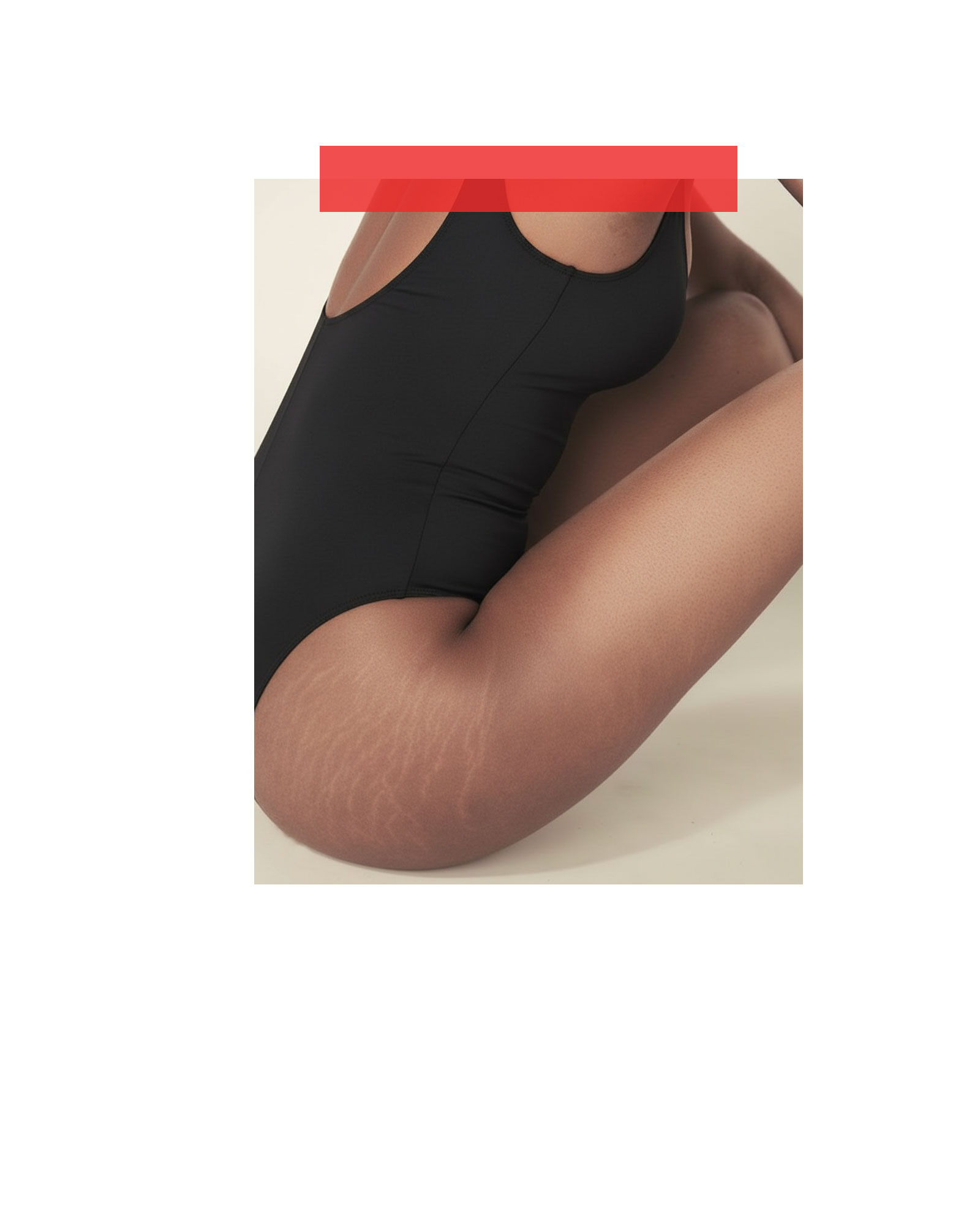Stretch marks, scientifically known as striae distensae (or simply striae), are a common type of scar that develops when the skin stretches or shrinks rapidly. This abrupt change causes the collagen and elastin fibers, which support the skin's structure, to rupture. As the skin heals, these tears result in the appearance of the characteristic marks. While stretch marks are entirely harmless from a medical perspective, they are a frequent cosmetic concern for many individuals.
Understanding the Causes of Stretch Marks
Stretch marks can affect anyone, regardless of gender or age, but certain factors significantly increase their likelihood of development:
- Rapid Weight Changes: Sudden weight gain or loss, particularly common during periods of rapid growth (e.g., puberty, bodybuilding) or significant changes in diet/lifestyle, can overstretch the skin.
- Pregnancy: This is one of the most common causes, often appearing on the abdomen, breasts, hips, and thighs during the later trimesters. Hormonal changes during pregnancy also play a role, making the skin more susceptible to tearing.
- Puberty: Growth spurts during adolescence can lead to stretch marks on the back, thighs, or breasts.
- Rapid Muscle Growth: Bodybuilders or individuals undergoing intense strength training may develop stretch marks as muscles expand quickly.
- Hormonal Changes: Elevated levels of corticosteroids, whether from medications (like oral corticosteroids) or certain medical conditions (e.g., Cushing's syndrome), can reduce the skin's elasticity and collagen production, making it more prone to stretch marks.
- Genetics: A family history of stretch marks indicates a higher predisposition to developing them.
- Underlying Health Conditions: Certain rare genetic disorders, like Ehlers-Danlos syndrome or Marfan syndrome, which affect connective tissue, can increase susceptibility.
Appearance of Stretch Marks
Stretch marks evolve in appearance over time:
- Early (Striae Rubrae): Initially, they often appear as red, pink, purple, or reddish-brown lines, depending on skin tone. They may feel slightly raised, itchy, or even tender to the touch. This inflammatory phase indicates active tearing and healing.
- Mature (Striae Albae): Over time, the marks fade in color, becoming white, silvery, or sometimes slightly glossy and depressed (atrophic). They may also appear furrowed or wrinkled. At this stage, they are more difficult to treat.
Preventing Stretch Marks
While complete prevention is challenging, especially when genetic predisposition is strong, several strategies can help minimise their development or severity:
- Maintain a Healthy, Stable Weight: Gradual weight changes, rather than rapid fluctuations, allow the skin more time to adapt.
- Consistent Hydration (Internal & External): Drinking ample water daily supports overall skin elasticity. Topically, regularly moisturising the skin, especially in areas prone to stretching, can help maintain suppleness. While no cream can prevent stretch marks entirely, keeping the skin well-hydrated and supple may reduce their severity.
- Nutrient-Rich Diet: A diet rich in vitamins A, C, D, E, zinc, and protein supports skin health, collagen production, and elasticity.
- Gradual Muscle Gain: For those building muscle, a slower, more controlled approach to growth can be beneficial.
Treating Stretch Marks
Once formed, stretch marks are a type of scar and cannot be entirely removed. However, their appearance can be significantly improved, particularly when treated in their earlier, reddish phases. Treatment aims to stimulate collagen and elastin production, improve texture, and reduce discolouration. A multi-faceted approach, often combining in-clinic treatments with consistent home care, typically yields the best results.
In-Clinic Treatments:
- Pulsed Dye Laser (PDL): Highly effective for early, red stretch marks (striae rubrae). PDL targets blood vessels, reducing redness and inflammation, and stimulating collagen.
- Fractional Lasers (Ablative and Non-Ablative, e.g., Fraxel): These create microscopic columns of injury in the skin, stimulating new collagen and elastin production to improve texture and tone for both red and white stretch marks. Ablative lasers are more aggressive with more downtime.
- Microneedling (Collagen Induction Therapy - CIT): Creates controlled micro-injuries to stimulate collagen and elastin, improving texture and promoting healing. Often combined with growth factors or PRP for enhanced results. Effective for various types of stretch marks.
- Radiofrequency (RF) Microneedling: Combines microneedling with radiofrequency energy to deliver heat into the dermis, providing superior collagen stimulation and tightening.
- Chemical Peels (TCA, Glycolic Acid): Can improve skin texture and reduce discoloration by promoting exfoliation and new cell growth. Deeper peels offer more significant results but come with more downtime.
- Microdermabrasion: A milder option that exfoliates the superficial layer of the skin, offering subtle improvements in texture and tone, particularly for newer marks.
At-Home Care & Products:
- Topical Retinoids: For newer, red stretch marks, retinoid creams (e.g., tretinoin, retinol) can help by promoting collagen production and improving skin cell turnover. They aren't effective on older, white marks. Note: Retinoids are typically contraindicated during pregnancy and breastfeeding.
- Hyaluronic Acid: Helps to hydrate and plump the skin, improving its elasticity and appearance.
- Centella Asiatica (Gotu Kola): A botanical extract believed to aid in collagen synthesis and wound healing.
- Exfoliation: Regular, gentle exfoliation (chemical or physical) can help to improve skin texture and allow other topical treatments to penetrate more effectively.
- Massage: While not a standalone solution, consistent massage with nourishing oils or creams may help improve skin elasticity and blood circulation in affected areas.
- Broad-Spectrum Sunscreen: Protecting stretch marks from sun exposure is crucial, as UV radiation can worsen their discoloration, especially for red marks, causing them to darken permanently.
A comprehensive consultation is always recommended to accurately assess the type and maturity of stretch marks and to devise the most appropriate and effective treatment plan.
